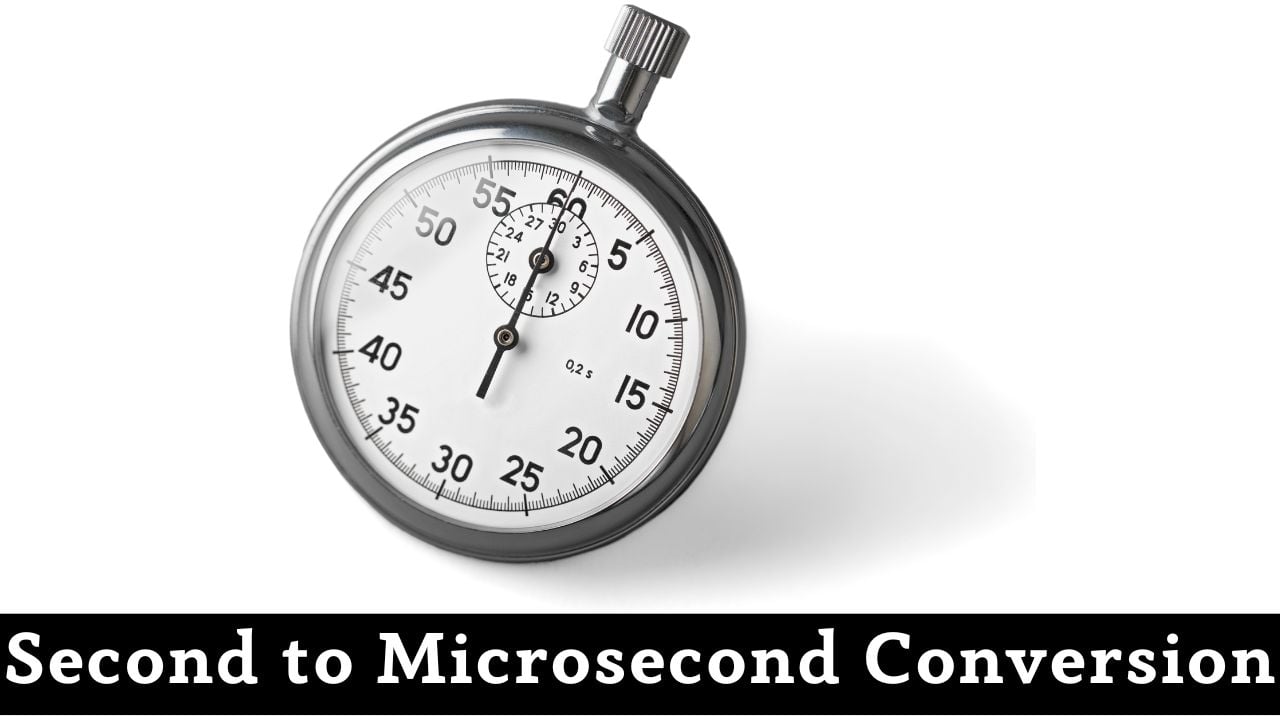Seconds to Microseconds Calculator
Precise time conversion with detailed breakdowns, quick presets, and educational insights

How Many Microseconds in Seconds
There are exactly 1,000,000 microseconds in one second. Converting between seconds and microseconds is precise and straightforward: multiply seconds by 1,000,000 to get microseconds, or divide microseconds by 1,000,000 to get seconds. This fundamental relationship makes microsecond-based time conversion calculations accurate and reliable for precise timing applications.
The Conversion Formula
Microseconds = Seconds × 1,000,000
Seconds = Microseconds ÷ 1,000,000
The calculation is based on the metric definition where “micro” means one millionth, so 1 second contains exactly 1,000,000 microseconds.
Example: 3 seconds × 1,000,000 = 3,000,000 microseconds, or 5,000,000 microseconds ÷ 1,000,000 = 5 seconds
Microsecond Understanding & Usage
Understanding microseconds:
1 Microsecond: 0.000001 seconds = 1/1,000,000 second
Common Usage: High-precision timing, scientific measurements, processor cycles
Applications: Computer science, electronics, physics research, telecommunications
Microseconds are essential in high-performance computing, real-time systems, and scientific applications where nanosecond precision is required
Quick Reference Table: Seconds to Microseconds
| Seconds | Microseconds | Milliseconds | Common Usage |
|---|---|---|---|
| 0.000001 | 1 | 0.001 | One microsecond |
| 0.00001 | 10 | 0.01 | Ten microseconds |
| 0.0001 | 100 | 0.1 | Processor instruction |
| 0.001 | 1,000 | 1 | One millisecond |
| 1 | 1,000,000 | 1,000 | One second |
| 60 | 60,000,000 | 60,000 | One minute |
Frequently Asked Questions
How do you convert seconds to microseconds?
To convert seconds to microseconds, multiply the number of seconds by 1,000,000. For example: 2.5 seconds × 1,000,000 = 2,500,000 microseconds. This works because there are exactly 1,000,000 microseconds in every second.
Why are there 1,000,000 microseconds in a second?
The prefix “micro” in the metric system means one millionth (1/1,000,000). So a microsecond is one millionth of a second, making 1,000,000 microseconds equal to one complete second.
When would you need seconds-to-microseconds conversion?
This conversion is essential in high-performance computing, real-time systems, scientific research, telecommunications, embedded systems, and any application requiring ultra-precise timing measurements and control.
Is the seconds-to-microseconds conversion always exact?
Yes, the conversion is always mathematically exact because it’s based on the metric system definition. 1 second = 1,000,000 microseconds is a precise relationship with no approximation involved.
Practical Applications & Technical Uses
Computer Science: Processor timing, algorithm optimization, real-time systems, and performance profiling often require microsecond precision to measure execution times and optimize performance bottlenecks.
Scientific Research: Physics experiments, chemical reactions, biological processes, and astronomical observations frequently need microsecond-level timing accuracy for precise data collection and analysis.
Electronics & Telecommunications: Signal processing, network protocols, data transmission, and electronic circuit analysis rely on microsecond timing for synchronization and performance optimization.
Technical tip: When working with high-frequency systems, microseconds provide the precision needed for accurate timing measurements without the complexity of nanosecond calculations, making them ideal for most real-time applications.
